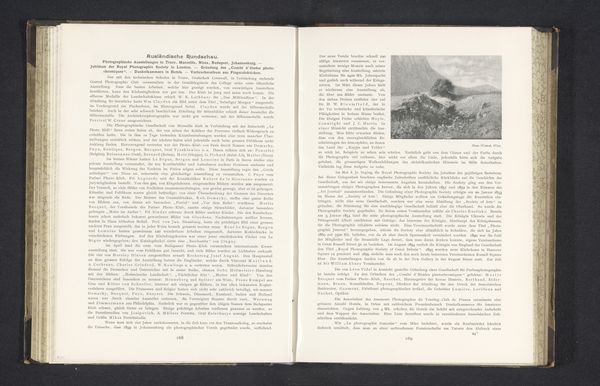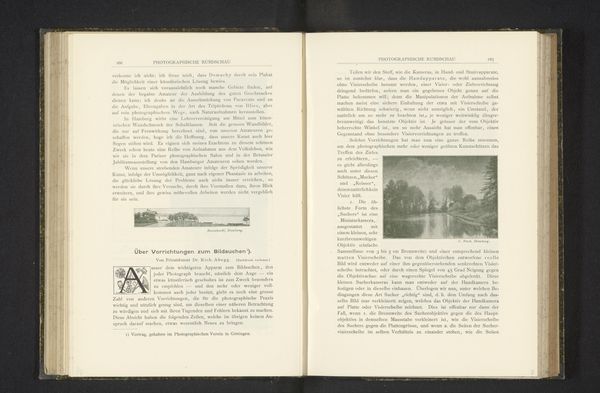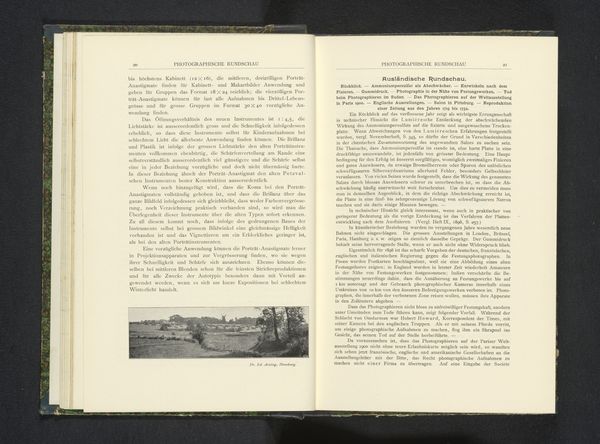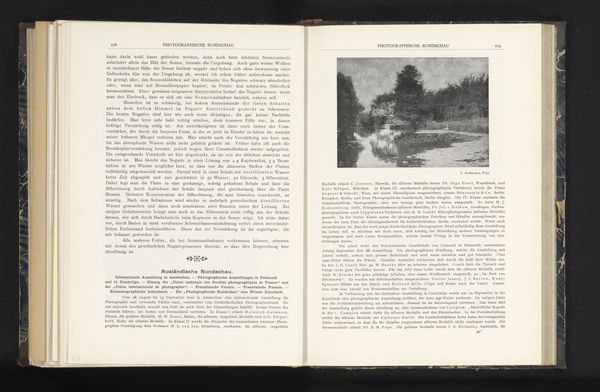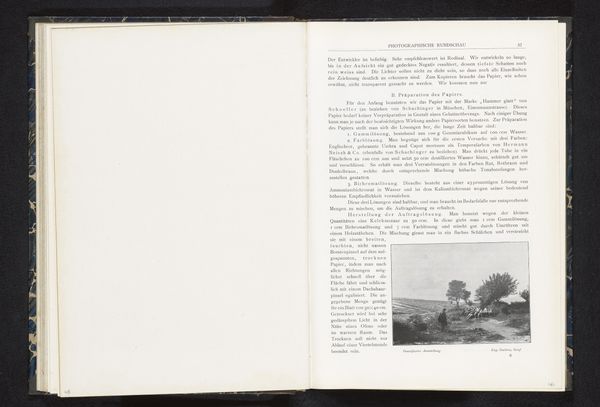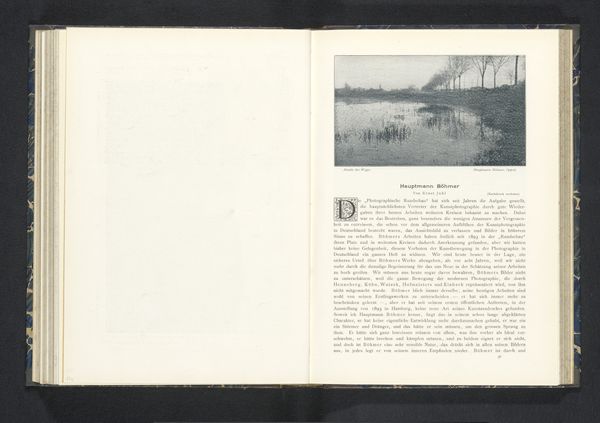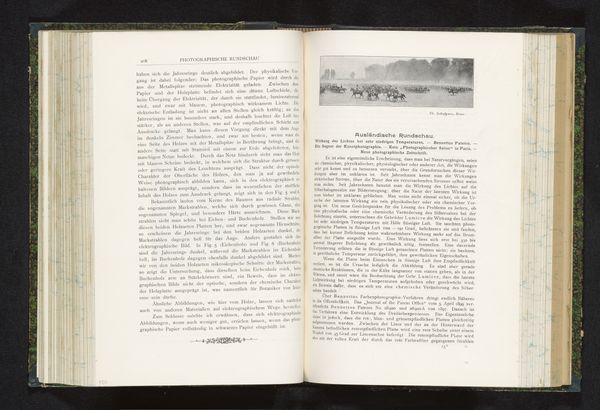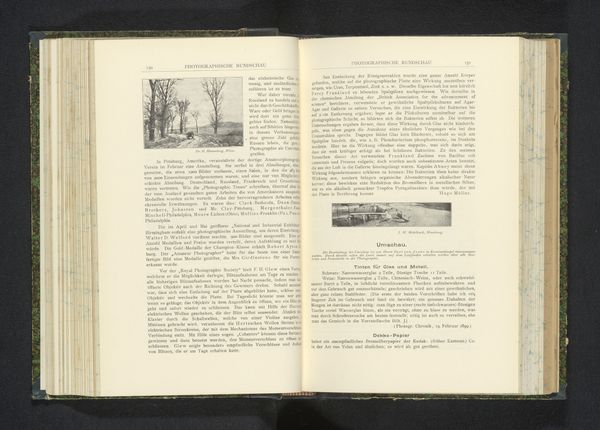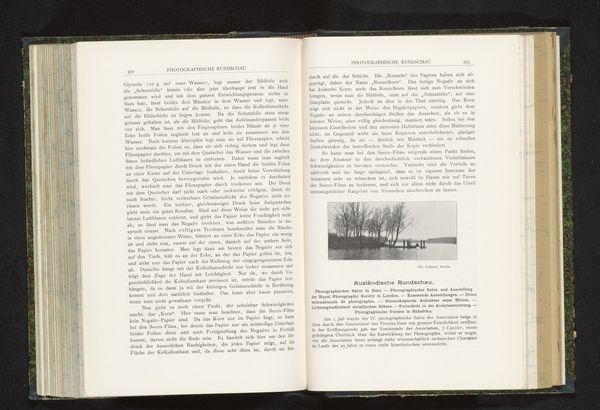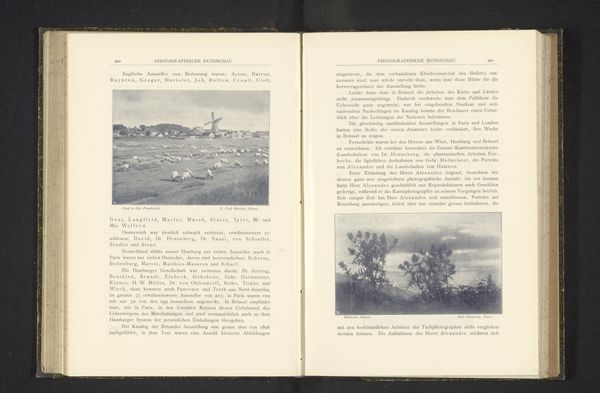
photography, gelatin-silver-print
#
pictorialism
#
landscape
#
photography
#
gelatin-silver-print
Dimensions: height 95 mm, width 128 mm
Copyright: Rijks Museum: Open Domain
Curator: We are looking at “Landschap,” a gelatin-silver print photograph predating 1903, attributed to H. Vonachten. The print embodies a very particular mood… What strikes you upon viewing it? Editor: An almost oppressive tranquility. The photograph is formally quite simple: ground, water, sky separated into bands. But this hazy atmosphere, this stillness, feels laden with a hidden story. Curator: Interesting observation. Formally, the use of a soft focus, so characteristic of Pictorialism, enhances this atmospheric quality, wouldn't you agree? Editor: It does. And Pictorialism, as a movement, with its focus on aesthetics and artistic effect, was reacting against the rise of documentary photography and its claims to objective representation. H. Vonachten’s “Landschap” then, through its hazy romanticism, might be a rejection of modernity's emphasis on the objective, or perhaps even a mourning of a pre-industrial past. Curator: Yes, the print revels in tonal variation rather than sharp detail, achieving painterly effects characteristic of that style. There's a beautiful flattening of perspective, compressing the planes of space which guide your eye directly to the band of trees in the middle-ground. Editor: Thinking of landscape more broadly: this image comes out of centuries of a very particular visual tradition. How does it relate to notions of nationhood and identity? Curator: Indeed, landscape as a genre is ripe with this. This image captures nature as something removed, quiet, idealized. Editor: Ultimately, isn’t this idyllic view masking something? Landscape is never neutral; it's about claiming land and establishing identity. In this sense, it becomes interesting to explore the artist’s role as an agent who mediates such representations. Curator: These questions add depth to understanding our appreciation of Vonachten’s technical prowess and the inherent moodiness of this photograph. Editor: Precisely. Seeing "Landschap" now involves recognising its context within a larger system of image-making.
Comments
No comments
Be the first to comment and join the conversation on the ultimate creative platform.

